Features
Colombo’s most popular caricaturist in a bygone era
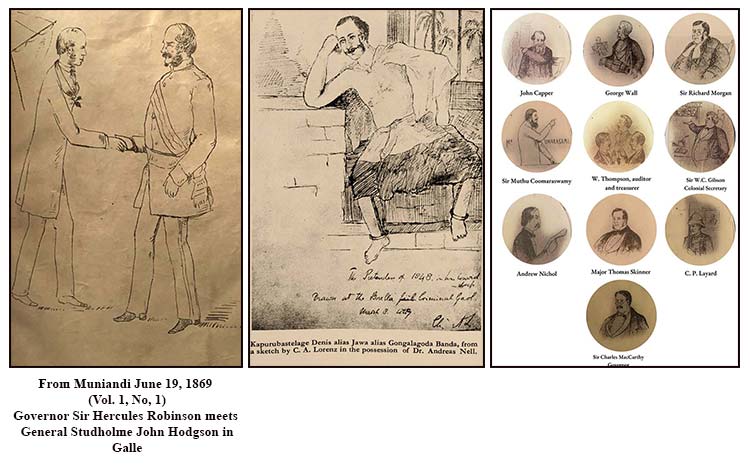
by Avishka Mario Senewiratne
With the passing of time, Lorenz did not have the time he would like to dedicate to the arts as before. The demand on his time in other fields such as in law and politics necessitated him to mainly if not totally focus on those aspects. However, his pencil and sketchbook never left his side. When inspiration struck him, out came a fine caricature. It has been over 150 years since his death and most of his once famous caricatures have been lost. A few have been reproduced as plates in some important publications over the last 100 years and preserved for posterity.
Caricatures have always been endearing pieces of art which have commented on sophisticated matters. In the dynasty of Lankan caricature artists such as J. L. K. van Dort, Bevis Bawa, Aubrey Collette, W. R. Wijesoma and Gihan de Chickera, C.A. Lorenz can be safely positioned as the ‘pioneer’.
One of the oldest surviving caricatures by Lorenz is that of the famous Wansapurna Dewage David (alias Gongalegoda Banda), leader of the 1848 Matale rebellion and pretender to the Kandyan throne. Upon being captured by the British, Gongalegoda Banda was brought to the Borella Criminal Gaol. It was here that Lorenz had the chance to see him and be inspired. Curious too. His pen did the rest. The result was a lovely caricature of the National hero. Perhaps the first and only live caricature of Banda.
This illustration was hitherto unknown for nearly 75 years until it was published in 1932 in G.K. Pippet’s A History of the Ceylon Police: Volume 1. Here it is mentioned that the illustration was in the possession of Dr. Andreas Nell, nephew of Lorenz’s wife, Eleanor. This sketch was signed and dated by Lorenz on March 3, 1849. Gongalegoda Banda would pass away later that year from a stomach ailment in Malacca where he was exiled.
When Lorenz and his wife left for England in 1853, he once again found some time on his hands as the voyage from Ceylon to Europe would take at least three months. Onboard the ship, Lorenz spent a lot of time drawing caricatures of the crew and various islands and features the ship sailed by. During the long trip to England, Mrs. Lorenz who was uncomfortable with the movements of the ship, fell ill quite often. Lorenz drew a few caricatures of her in this state captioning them as “cribbed, cabined and confined”.
After their arrival and briefly settling in England, Eleanor Lorenz began to regain her health. Lorenz did more illustrations of her. One was captioned as follows: “Ellen is literally rosy, and after a walk in the Park, comes home as red as a boiled crab, as if one could light one’s pipe at her nose.” (Blaze, p. 3)
Morgan and Lorenz caricatures
Sir Richard Morgan was one of Ceylon’s most beloved lawyers and legislators in the mid-19th century. A few years senior to Lorenz, he was one of the first to join the Colombo Academy (later Royal College) in its original batch. Lorenz and Morgan, who shared many interests and were on the same wavelength were great friends. In 1856, Morgan, while serving as the Burgher Member of the Legislative Council and Leader of the Unofficial Bar, was made District Judge of Colombo by Governor Sir Henry Ward. By this time, Morgan who had considerable power in the Colony and its affairs was nicknamed “Governor”. Overjoyed by his friend’s appointment to the high rank, Lorenz drafted the following brief note and caricature of himself celebrating Morgan’s appointment:
Hooray ! ! !
My dear Governor,
The language at my command couldn’t do it. But I’ve tried it in a sketch. So, I says Hooray again!
Yours very sincerely,
C. A. Lorenz
11th July, 1856
Sporting a beard then, upon hearing the news Lorenz leaps with joy. His top hat falls. The rooster crows ‘Hooray’ and the dog joins in the celebration. Sketch by Lorenz himself in 1856.
Caricatures in the Christmas Debates 1860-65
In a lecture on July 6, 1929, at the Dutch Burgher Union, E. H. Van der Wall says the following about Lorenz:
“Lorenz was as gifted with the artist’s pencil as with his pen. During the sittings of the Legislative Council, while pleading at the Bar, and even on the Bench at Chilaw, he often found a few moments for a humorous sketch of passing events. A few words of description or a few strokes with his pencil and the picture was true to life, for Lorenz had the unmistakable artist’s touch.” (Journal of the Dutch Burgher Union, Volume XIX, p. 58)
The debates were initially published in the Ceylon Examiner during 1860 and 1868, with the exception of 1862. Among Lorenz’s many literary pursuits, the Christmas Debates of 1860-65 are widely considered his magnum opus. A true masterpiece, this work printed in 1866 by John Maitland consists of five short reports of Debates and Council Meetings supposed to have taken place on Christmas Eve of each relevant year. Full of humour, wit and facts, the Christmas Debates is an endearing piece of work which was essentially enhanced by Lorenz’s sketches and skilful caricatures.
The then custodian of most Lorenziana, Guy O. Grenier published the Christmas Debates again in 1925 with some additions such as an introduction and blurbs by famous personalities praising them. In both books, the illustrations depicted were hand-pasted photographs of the sketches, possibly taken by W. H. Skeen & Co. in sepia tone and included with a blue circular border.
Personalities pre-eminent in the mid-19th century of Ceylon and who may be labelled as ‘legends’ such as Sir Richard Morgan, George Wall, Thomas Skinner, Sir Muttu Coomaraswamy, etc. as well as British officials like Governor Sir Charles MacCarthy and C. P. Layard are featured in the Christmas debates. The caricatures of these personalities bear an uncanny resemblance to them. It was known that when Lorenz had little work to do during the sittings of the Council or Committees, he would employ his time by sketching the members. Only those published in the Christmas Debates have survived up to today. In the 1866 preface to the Christmas Debates, Francis Fonseka, the printer of that volume comments as follows:
“The illustrations annexed to the said several Debates shall be deemed and construed to represent the person or persons, whom they are intended to represent, and no other”
This writer has made every effort to trace the identity of the 10 caricatures drawn by Lorenz by comparing them with photographs of certain members of the Legislature at that time. Lorenz did not caption the original sketches in the book. One must read the book through to understand what sort of an individual is depicted in the illustrations. However, without knowing what these personalities looked like in reality, it is hard to identify them. Sir Richard Morgan, who is included in the Christmas Debates as well as other illustrations by Lorenz, commented on this masterpiece of Lorenz as follows:
“When Christmas came around and relatives and friends met to express to each other the glad wishes of the Season, the Christmas Supplement of the Examiner; the Mock Council Debates, the rich songs and the richer jokes with which they abounded and his inimitable pen and ink sketches, the gift he had of hitting off a person at almost the first view and perpetuating his peculiarities and idiosyncrasies, gave us no end of merriment and joy.” (Quoted from Grenier, G.O. (Ed.), (1925), Christmas Debates of the Island of Ceylon, p. i)

We had last week inadvertently dropped a painting illustrating “Charles Amrose Lorenz: an unsung artist of the 19th century by Avishka Mario Senewiratne” which is reproduced here. Much of the writer’s text referred to that illustration appearing above. We apologize for the error.
Caricatures of various figures drawn by Lorenz in the Christmas Debates
Muniandi
In 1869, the Examiner press endeavoured a very enthusiastic project by chartering a magazine called Muniandi.. Lorenz’s old friend and colleague in the legislature, John Capper who had just returned from England was made its editor. This magazine, full of satire, illustrations and humour was in the style of the British Punch Magazine. Though Punch lasted till the 21st century, Muniandi had only a brief but notable period of existence. Priced one shilling, the ten-page Muniandi was a good way of amusing the government with its satirical outlook on the affairs of that time. By then, Charles Lorenz was facing the travails of the illness that would result in his early death. Therefore, for this reason, as well as his involvement in multiple fields, disallowed Lorenz to be active in Muniandi as much as he would have liked.
Though there are hardly any signatures or initials differentiating the artists of these satirical caricatures, many scholars then and now have widely accepted that J. L. K. Vandort is one of the leading artists. However, if one is familiar with the works of Lorenz, it is more than fair to assume that Charles Lorenz himself was one of the illustrators in Muniandi. Yasmin Gunaratne in her monumental work English Literature in Ceylon confirms the above as follows: “Muniandi… illustrated almost entirely by a talented Burgher artist, J. L. K. Van Dort, although Lorenz contributed in some drawings.” (Gunaratne, Yasmin, (1968), English Literature in Ceylon 1815-1878, Tisara Press)
The illustration depicted below published in Muniandi is assumed to be by C. A. Lorenz.
Some other work
Even though his busy public life took much of his time, on a few occasions Lorenz did not hesitate to use his prowess in composing music. On one occasion as stated by J. R. Toussaint of the Ceylon Civil Service (1956, p. 51), Sir Richard Cayley during his early stage of serving Ceylon, lived in Lorenz’s Elie House in Mutwal, Colombo. Here they both produced a popular song. Cayley wrote the words and Lorenz arranged the music for the pianoforte. Titled The Pipe of Clay, the two of them performed this song when among friends. Accompanied by Lorenz on the piano, Sir Richard Cayley; who would go on to be a Chief Justice of Ceylon, did the singing. The following are the words:
The Pipe of Clay
To Beauty’s charms or wars alarms
Let others tune their lay, Sir,
But as for me my theme shall be
My rare old pipe of clay, Sir,
Though bowls of wine may be divine
To drive dull care away, Sir,
Yet there’s no bowl can ease the soul
As the bowl of a pipe of clay, Sir.
What incense breaths from fleecy wreaths,
Of vapour lightly rising,
As we sit at night with our pipes alight
All care and strife despising.
Though Fortune flees, though Friendship dies,
Though Hope may fade away, Sir,
Yet there’s a friend that’ll last to the end
In the rare old pipe of clay, Sir.
A note on the art of Lorenz
Among the many artists who followed Lorenz in the 19th century, no one came to prominence or to the brilliance of J. L. K. van Dort. Lorenz invited this fellow student of the Colombo Academy in 1850 to collaborate with him in the Young Ceylon magazine. Van Dort was only 18 years old then. One of the most conspicuous features of the inaugural Young Ceylon magazine was the caricature of The Giant of Matura based on a real-life 6’6 tall man who picked coconuts in Matara.
As the illustration was not signed many readers believed it to be of Lorenz. However, the truth was that it was by van Dort, who though not in his heyday and on the threshold of his fame, had a very similar style to Lorenz. B. R. Blaze comments that Lorenz inspired young van Dort in his early work and that the ‘Lorenz touch’ in van Dort was not ambiguous.
Only a handful of illustrations of Lorenz have survived to date. They are nearly all what was published in Blaze’s Life of Lorenz, the caricatures in Christmas Debates, Muniandi and the Examiner. Dr. Andreas Nell, the nephew of Eleanor Lorenz had a fair collection of Lorenz’s illustrations. However, their fate is not known. Guy O. Grenier who owned a large number of letters, illustrations and memorabilia of Lorenz sold them to the Royal Asiatic Society in the early 1960s.
Some of the contents of that collection remain to date. Unlike the artists who followed in the 20th century such as Keyt, Daraniyagala, Amarasekere, etc., the art of Lorenz may not win the collector’s interest or value. From the perspective of its historical significance, the art of Lorenz is phenomenal, special and endearing. Intertwined with humour, wisdom and knowledge, his caricatures will surely linger for generations not born.
“He (Lorenz) was an admirable artist…”
– Dr. R. K. de Silva, 1998 in 19th Century Newspaper Engravings of Ceylon
References
1. Blaze, B.R., (1948), Life of Lorenz, The Associated Newspapers of Sri Lanka Ltd.
2. Toussaint, J.R., (1956), Lorenz and his Times, Dutch Burgher Union
3. Roberts, Colin-Thome, Raheem, (1989), People Inbetween, Sarvodaya
4. Lorenz collection in the Royal Asiatic Society Library
5. Lorenz, C.A., (1866), Christmas Debates,
6. Mahendran, M.S., (1918), A Brief Sketch of the Life of Charles Ambrose Lorenz, American Ceylon Mission Press
7. De Silva, R.K., (1998), 19th Century Newspaper Engravings of Ceylon, Serendib Publishers
8. Pippet, G.K., (1932), A History of the Ceylon Police, Volume 1
9. Warnapala, K, (2012), ‘Caricaturing Colonial Rule in Sri Lanka: An Analysis of Muniandi, The Ceylon Punch?’, Early Popular Visual Culture, Vol.10, No.3, pp. 227-244
10. Jayawardena, K., (2012), Erasure of the Euro-Asians
Features
Minds and Memories picturing 65 years of Sri Lankan Politics and Society
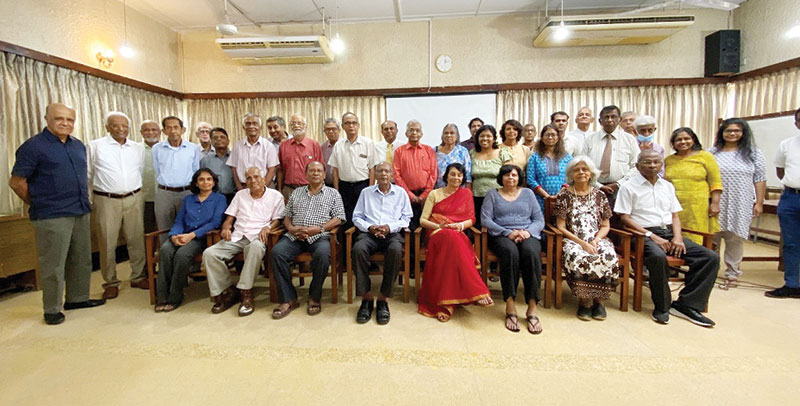
Last week I made mention of a gathering in Colombo to remember Kumar David, who passed away last October, as Comrade, Professor and Friend. The event was held on Saturday, April 5th, a day of double significance, first as the anniversary of the JVP insurrection on 5th April 1971, and now the occasion of the official welcome extended to visiting Indian Prime Narendra Modi by the still new JVP-NPP government. The venue was the Ecumenical Institute for Study and Dialogue (EISD) on Havelock Road, which has long been a forum for dialogues and discussions of topics ranging from religious ecumenism, Liberation Theology and Marxist politics. Those who gathered to remember Kumar were also drawn from many overlapping social, academic, professional and political circles that intersected Kumar’s life and work at multiple points. Temporally and collectively, the gathering spanned over six decades in the evolution of post-independence Sri Lanka – its politics, society and the economy.
Several spoke and recalled memories, and their contributions covered from what many of us have experienced as Sri Lankans from the early 1960s to the first two and a half decades of the 21st century. The task of moderating the discussion fell to Prof. Vijaya Kumar, Emeritus Professor of Chemistry at Peradeniya, who was a longtime friend of Kumar David at the university and a political comrade in the LSSP – especially in the Party’s educational and publication activities.
Vijaya Kumar recalled Kumar David’s contributions not only to Marxist politics but also to the popularization of Science that became a feature in several of KD’s weekly contributions to the Sunday Island and the Colombo Telegraph. Marshal Fernando, former and longtime Director of the EISD welcomed the participants and spoke of Kumar David’s many interactions with the Institute and his unflinching offer of support and advice to its activities. EISD’s current Director, Fr. Jayanath Panditharatne and his staff were extremely helpful.
Rohini David, Kumar’s wife of over 50 years, flew in specially for the occasion from Los Angeles and spoke glowingly of Kumar’s personal life as a husband and a father, and of his generosity for causes that he was committed to, not only political, but also, and more importantly, educational. An interesting nugget revealed by Rohini is the little known fact that Kumar David was actually baptized twice – possibly as a Roman Catholic on his father’s side, and as an Anglican on his mother’s side. Yet he grew to see an altogether different light in all of his adult life. Kumar’s father was Magistrate BGS David, and his maternal grandfather was a District Judge, James Joseph.
Kumar had an early introduction to politics as a result of his exposure to some of the political preparations for the Great Hartal of 1953. Kumar was 12 years old then, and the conduit was his step-father, Lloyd de Silva an LSSPer who was close to the Party’s frontline leaders. From a very young age, Kumar became familiar with all the leaders and intellectuals of the LSSP. Lloyd was known for his sharp wit and cutting polemics. One of my favourite lines is his characterization of Bala Tampoe as a “Lone Ranger in the Mass Movement.” Lloyd’s polemics may have rubbed on Kumar’s impressionable mind, but the more enduring effect came from Lloyd’s good collection of Marxist books that Kumar self-admittedly devoured as much as he could as a teenager and an undergraduate.
Electric Power and Politics
Early accounts of Kumar’s public persona came from Chris Ratnayake, Prof. Sivasegaram and Dr. K. Vigneswaran, all Kumar’s contemporaries at the Engineering Faculty that was then located in Colombo. From their university days in the early 1960s, until now, they have witnessed, been a part of and made their own contributions to politics and society in Sri Lanka. Chris, a former CEB and World Bank Electrical Engineer, was part of the Trotskyite LSSP nucleus in the Engineering Faculty, along with Bernard Wijedoru, Kumar David, Sivaguru Ganesan, MWW Dharmawardana, Wickramabahu Karunaratne and Chris Rodrigo. Of that group only Chris and MWW are alive now.
Chris gave an accurate outline of their political involvement as students, Kumar’s academic brilliance and his later roles as a Lecturer and Director of the CEB under the United Front Government. Chris also described Kumar’s later academic interest and professional expertise in the unbundling of power systems and opening them to the market. Even though he was a Marxist, or may be because of it, Kumar had a good understanding of the operation of the market forces in the electricity sector.
Chris also dealt at length on Sri Lanka’s divergent economic trajectories before and after 1977, and the current aftermath of the recent economic crisis. As someone who has worked with the World Bank in 81 countries and has had the experience of IMF bailout programs, Chris had both warning and advice in light of Sri Lanka’s current situation. No country, he said, has embarked on an economic growth trajectory by following standard IMF prescriptions, and he pointed out that countries like the Asian Tigers have prospered not by following the IMF programs but by charting their own pathways.
Prof. S. Sivasegaram and Dr. K. Vigneswaran graduated in 1964, one year after Kumar David, with first classes in Mechanical Engineering and Civil Engineering, respectively. Sivasegaram joined the academia like Kumar David, while Vigneswaran joined the Irrigation Department but was later drawn into the vortex of Tamil politics where he has been a voice of reason and a source for constructive alternatives. As Engineering students, they were both Federal Party supporters and were not aligned with Kumar’s left politics.
It was later at London Imperial College, Sivasegaram said, he got interested in Marxism and he credited Kumar as one of the people who introduced him to Marxism and to anti-Vietnam protests. But Kumar could not persuade Sivasegaram to be a Trotskyite. Sivasegaram has been a Maoist in politics and apart from his Engineering, he is also an accomplished poet in Tamil. Vigneswaran recalled Kumar’s political involvement as a Marxist in support of the right of self-determination of the Tamils and his accessibility to Tamil groups who were looking for support from the political left.
K. Ramathas and Lal Chandranath were students of Kumar David at Peradeniya, and both went on to become established professionals in the IT sector. Ramathas passionately recalled Kumar’s effectiveness as a teacher and described his personal debt of gratitude for helping him to get a lasting understanding of the concept and application of power system stability. This understanding has helped him deal with other systems, said Ramathas, even as he bemoaned the lack of understanding of system stability among young Engineers and their failure to properly explain and address recurrent power failures in Sri Lanka.
Left Politics without Power
The transition from Engineering to politics in the discussion was seamlessly handled by veterans of left politics, viz., Siritunga Jayasuriya, Piyal Rajakaruna and Dishan Dharmasena, and by Prof. Nirmal Dewasiri of the History Department at the University of Colombo. Siritunga, Piyal and Dishan spoke to the personal, intellectual and organizational aspects of Kumar David in the development of left politics after Kumar David, Vasudeva Nanayakkara and Bahu were no longer associated with the LSSP. Dewasiri reflected on the role of the intellectuals in left political parties and the lost to the left movement as a whole arising from the resignation or expulsion of intellectuals from left political organizations.
While Kumar David’s academic and professional pre-occupation was electric power, pursuing power for the sake of power was not the essence of his politics. That has been the case with Bahu and Sivasegaram as well. They naturally had a teaching or educational role in politics, but they shared another dimension that is universally common to Left politics. Leszek Kolakowski, the Polish Marxist who later became the most celebrated Marxist renegade, has opined that insofar as leftists are generally ahead of their times in advocating fundamental social change and promoting ideas that do not resonate with much of the population, they are unlikely to win power through electoral means.
Yet opposition politics predicated on exposing and decrying everything that is wrong with the system and projecting to change the system is fundamentally the most moral position that one can take in politics. So much so it is worth pursuing even without the prospect of power, as Hector Abhayavardhana wrote in his obituaries for LSSP leaders like NM Perera and Colvin R de Silva. By that token, the coalition politics of the 1960s could be seen as privileging a shared parliamentary path to power while dismissing as doctrinaire the insistence on a sole revolutionary path to power.
The two perspectives clashed head on and splintered the LSSP at its historic 1964 Conference. Kumar David and Lal Wijenayake were the youngest members at that conference, and the political genesis of Kumar David and others at the Engineering faculty that Chris Ratnayake outlined was essentially post-coalition politics. In later years, Vasudeva Nanayakkara, Bahu and Kumar David set about creating a left-opposition (Vama) tendency within the LSSP.
This was considered a superior alternative to breaking away from the Party that had been the experience of 1964. Kumar David may have instinctively appreciated the primacy of the overall system stability even if individual components were getting to be unstable! But their internal efforts were stalled, and they were systematically expelled from the Party one by one. Kumar David recounted these developments in the obituary he wrote for Bahu.
As I wrote last week, after 1977 and with the presidential system in place, the hitherto left political parties and organizations generally allied themselves with one or the other of the three main political alliances led by the SLFP, the SLPP and even the UNP. A cluster of them gravitated to the NPP that has been set up by the JVP under the leadership of Anura Kumara Dissanayake. Kumar David supported the new JVP/NPP initiative and was optimistic about its prospects. He wrote positively about them in his weekly columns in the Sunday Island and the Colombo Telegraph.
The Social Circles of Politics
Sometime in late 2006, Rohan Edrisinha introduced Kumar and me to Rajpal Abeynayake, who was then the Editor of the Sunday Observer, for the purpose of writing weekly columns for the Paper. Bahu was already writing for the Sunday Observer and for almost an year, Bahu, Kumar and I were Sunday Island columnists, courtesy of Rajpal Abeynayake. In 2007, Prof. Vijaya Kumar introduced us to Manik de Silva, already the doyen of Sri Lanka’s English medium editors, and Kumar and I started writing for the Sunday Island edited by Manik. It has been non-stop weekly writing a full 18 years. For a number of years, we have also been publishing modified versions of our articles in the Colombo Telegraph, the online journal edited by the inimitable Uvindu Kurukulasuriya.
Writing mainstream rekindled old friendships and created new ones. It was gratifying to see many of them show up at the celebration of life for Kumar. That included Rajpal Abeynayake, Bunchy Rahuman, Gamini Kulatunga, Ranjith Galappatti, Tissa Jayatilaka, NG (Tanky) Wickremeratne, and Manik de Silva. Vijaya Chandrasoma, who unfortunately could not attend the meeting, was particularly supportive of the event along with Tanky and Ramathas. Tissa and Manik spoke at the event and shared their memories of Kumar.
Dr. Santhushya Fernando of the Colombo Medical Faculty provided organizational support and created two superb video montages of Kumar’s life in pictures to background theme songs by Nat King Cole and Frank Sinatra. Manoj Rathnayake produced a Video Recording of the event.
In a quirky coincidence, five of those who attended the event, viz. Manik de Silva, Vijaya Kumar, Chris Ratnayake, S. Sivasegaram and K. Vigneswaran were all classmates at Royal College. On a personal note, I have been associated with every one of them in one way or another. Chris and I were also Engineers at the Hantana Housing Development in the early 1980s, for which the late Suren Wickremesinghe and his wife Tanya were the Architects. And Suren was in the same Royal College class as the other five mentioned here.
In the last article he wrote before his passing, Kumar David congratulated Anura Kumara Dissanayake for his magnificent political achievement and expressed cautious optimism for the prospects under an NPP government. Many in the new government followed Kumar David’s articles and opinions and were keen to participate in the celebration of life that was organized for him. That was not going to be possible anyway with the visit of Prime Minister Modi falling on the same day. Even so, Prof. Sunil Servi, Minister of Buddha Sasana, and Religious and Cultural Affairs, was graciously present at the event and expressed his appreciation of Kumar David’s contributions to Sri Lankan politics and society.
by Rajan Philips
Features
53 Years of HARTI- Looking Back and Looking Ahead
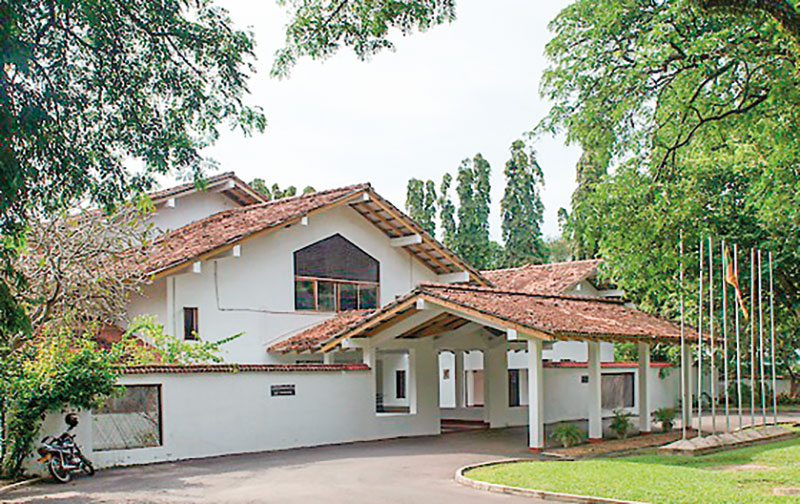
C. Narayanasuwami, the first Director of the then Agrarian Research and Training Institute (ARTI).
I am delighted to be associated with the fifty third anniversary celebrations of HARTI. I cherish pleasant memories of the relentless efforts made as the First Director to establish, incorporate, develop, direct, and manage a nascent institute in the 1970s amidst many challenges. The seven-year period as Director remains as the most formidable and rewarding period in my career as a development professional. I have been fortunate to have had a continuing relationship with HARTI over the last five decades. It is rarely that one who played a significant role in the establishment and growth of an institution gets an opportunity to maintain the links throughout his lifetime and provide messages on the completion of its fifth (I was still the director then), the 15th, 50th and 53rd anniversaries.
I had occasion also to acknowledge the contribution of the Institute on its 46th year when I released my book, ‘Managing Development: People, Policies and Institutions’ using HARTI auditorium and facilities, with the able support of the then director and staff who made the event memorable. The book contains a special chapter on HARTI.
On HARTI’s 15th anniversary I was called upon to offer some thoughts on the Institute’s future operations. The following were some of my observations then, “ARTI has graduated from its stage of infancy to adolescence….Looking back it gives me great satisfaction to observe the vast strides it has made in developing itself into a dynamic multidisciplinary research institution with a complement of qualified and trained staff. The significant progress achieved in new areas such as marketing and food policy, data processing, statistical consultancies, information dissemination and irrigation management, highlights the relevance and validity of the scope and objectives originally conceived and implemented”.
It may be prudent to review whether the recommendations contained in that message, specifically (a) the preparation of a catalogue of research findings accepted for implementation partially or fully during policy formulation, (b) the relevance and usefulness of information services and market research activities in enhancing farmer income, and (c) the extent to which the concept of interdisciplinary research- a judicious blend of socio-economic and technical research considered vital for problem-oriented studies- was applied to seek solutions to problems in the agricultural sector.
The thoughts expressed on the 15th anniversary also encompassed some significant management concerns, specifically, the need to study the institutional capabilities of implementing agencies, including the ‘human factor’ that influenced development, and a critical review of leadership patterns, management styles, motivational aspects, and behavioural and attitudinal factors that were considered vital to improve performance of agrarian enterprises.
A review of HARTI’s current operational processes confirm that farmer-based and policy-based studies are given greater attention, as for example, providing market information service for the benefit of producers, and undertaking credit, microfinance, and marketing studies to support policy changes.
The changes introduced over the years which modified the original discipline-based research units into more functional divisions such as agricultural policy and project evaluation division, environmental and water resources management division, and agricultural resource management division, clearly signified the growing importance attached to functional, action-oriented research in preference to the originally conceived narrowly focused discipline-based research activities.
HARTI has firmly established its place as a centre of excellence in socio-economic research and training with a mature staff base. It is pertinent at this juncture to determine whether the progress of HARTI’s operations was consistently and uniformly assessed as successful over the last five decades.
Anecdotal evidence and transient observations suggest that there were ups and downs in performance standards over the last couple of decades due to a variety of factors, not excluding political and administrative interventions, that downplayed the significance of socio-economic research. The success of HARTI’s operations, including the impact of policy-based studies, should be judged on the basis of improved legislation to establish a more structured socio-economic policy framework for agrarian development.
Looking Ahead
Fifty-three years in the life of an institution is substantial and significant enough to review, reflect and evaluate successes and shortcomings. Agrarian landscapes have changed over the last few decades and national and global trends in agriculture have seen radical transformation. Under these circumstances, such a review and reflection would provide the basis for improving organisational structures for agricultural institutions such as the Paddy Marketing Board, development of well-conceived food security plans, and above all, carefully orchestrated interventions to improve farmer income.
New opportunities have arisen consequent to the recent changes in the political horizon which further validates the role of HARTI. HARTI was born at a time when Land Reform and Agricultural Productivity were given pride of place in the development programs of the then government. The Paddy Lands Act provided for the emancipation of the farming community but recent events have proven that the implementation of the Paddy Lands Act has to be re-looked at in the context of agricultural marketing, agricultural productivity and income generation for the farming community.
Farmers have been at the mercy of millers and the price of paddy has been manipulated by an oligopoly of millers. This needs change and greater flexibility must be exercised to fix a guaranteed scale of prices that adjust to varying market situations, and provide adequate storage and milling facilities to ensure that there is no price manipulation. It is time that the Paddy Lands Act is amended to provide for greater flexibility in the provision of milling, storage and marketing services.
The need for restructuring small and medium scale enterprises (SMEs) recently announced by the government warrants greater inputs from HARTI to study the structure, institutional impediments and managerial constraints that inflict heavy damages leading to losses in profitability and organisational efficiency of SMEs.
Similarly, HARTI should look at the operational efficiency of the cooperative societies and assess the inputs required to make them more viable agrarian institutions at the rural level. A compact research exercise could unearth inefficiencies that require remedial intervention.
With heightened priority accorded to poverty alleviation and rural development by the current government, HARTI should be in the forefront to initiate case studies on a country wide platform, perhaps selecting areas on a zonal basis, to determine applicable modes of intervention that would help alleviate poverty.
The objective should be to work with implementing line agencies to identify structural and institutional weaknesses that hamper implementation of poverty reduction and rural development policies and programs.
The role played in disseminating marketing information has had considerable success in keeping the farming community informed of pricing structures. This should be further expanded to identify simple agricultural marketing practices that contribute to better pricing and income distribution.
HARTI should consider setting up a small management unit to provide inputs for management of small-scale agrarian enterprises, including the setting up of monitoring and evaluation programs, to regularly monitor and evaluate implementation performance and provide advisory support.
Research and training must get high level endorsement
to ensure that agrarian policies and programs constitute integral components of the agricultural development framework. This would necessitate a role for HARTI in central planning bodies to propose, consider and align research priorities in line with critical agricultural needs.
There is a felt need to establish links with universities and co-opt university staff to play a role in HARTI research and training activities-this was done during the initial seven-year period. These linkages would help HARTI to undertake evaluative studies jointly to assess impacts of agrarian/agricultural projects and disseminate lessons learned for improving the planning and execution of future projects in the different sectors.
In the overall analysis, the usefulness of HARTI remains in articulating that research and analysis are crucial to the success of implementation of agrarian policies and programs.
In conclusion, let us congratulate the architects and the dynamic management teams and staff that supported the remarkable growth of HARTI which today looks forward to injecting greater dynamism to build a robust institution that would gear itself to meeting the challenges of a new era of diversified and self-reliant agrarian society. As the first director of the Institute, it is my wish that it should grow from strength to strength to maintain its objectivity and produce evidence-based studies that would help toward better policies and implementation structures for rural transformation.
Features
Keynote Speech at the Launch of The Ceylon Journal, by Rohan Pethiyagoda
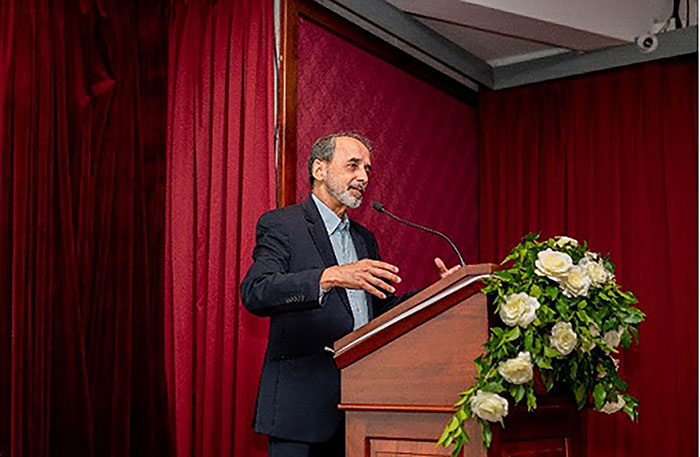
“How Rubber Shaped our Political Philosophy”
The Ceylon Journal was launched last August. Its first issue is already out of print. Only a handful of the second issue covering new perspectives of history, art, law, politics, folklore, and many other facets of Sri Lanka is available. To reserve your very own copy priced Rs. 2000 call on 0725830728.
Congratulations, Avishka [Senewiratne]. I am so proud of what you have done. Especially, Ladies and Gentlemen, to see and hear all of us stand up and actually sing the National Anthem was such a pleasure. Too often on occasions like this, the anthem is played, and no one sings. And we sang so beautifully this evening that it brought tears to my eyes. It is not often we get to think patriotic thoughts in Sri Lanka nowadays: this evening was a refreshing exception.
I’m never very sure what to say on an occasion like this, in which we celebrate history, especially given that I am a scientist and not a historian. It poses something of a challenge for me. Although we are often told that we must study history because it repeats itself, I don’t believe it ever does. But history certainly informs us: articles such as those in The Ceylon Journal, of which I read an advance copy, help us understand the context of our past and how it explains our present.
I want to take an example and explain what I am on about. I’m going to talk about rubber. Yes rubber, as in ‘eraser’, and how it crafted our national political identity, helping, even now seven decades later, to make ‘capitalism’ a pejorative.
As I think you know already, rubber came into general use in the middle of the 19th century. Charles Macintosh invented the raincoat in 1824 by placing a thin sheet of rubber between two sheets of fabric and pressing them together. That invention transformed many things, not least warfare. Just think of Napoleon’s invasion of Russia in the winter of 1812. His troops did that without any kind of waterproof clothing. Some 200,000 of them perished, not from bullets but from hypothermia. Waterproof raincoats could have saved thousands of lives. Not long after rubber came to be used for waterproofing, we saw the first undersea telegraph cable connecting Europe to North America being laid in the 1850s. When the American civil war broke out in 1860, demand for rubber increased yet further: the troops needed raincoats and other items made from this miracle material.
At that time rubber, used to be collected from the wild in the province of Pará in Northern Brazil, across which the Amazon drains into the Atlantic. In 1866, steamers began plying thousands of kilometres upriver, to return with cargoes of rubber harvested from the rainforest. Soon, the wild trees were being tapped to exhaustion and the sustainability of supply became doubtful.
Meanwhile, England was at the zenith of its colonial power, and colonial strategists thought rather like corporate strategists do today. The director of the Kew Gardens at the time, Joseph Hooker, felt there might be one day be a greater potential for rubber. He decided to look into the possibility of cultivating the rubber tree, Hevea brasiliensis, in Britain’s Asian colonies. So, he dispatched a young man called Henry Wickham to the Amazon to try to secure some seeds. In 1876, Wickham returned to Kew with 70,000 rubber seeds. These were planted out in hothouses in Kew and by the end of that year, almost 2000 of them had germinated.
These were dispatched to Ceylon, only a few weeks’ voyage away now, thanks to steamships and the Suez Canal. The director of the Peradeniya Botanic Garden at the time was George Henry Kendrick Thwaites, a brilliant systematic botanist and horticulturalist. Thwaites received the seedlings and had to decide where to plant them. He read the available literature—remember, this was 1876: there was no internet—and managed to piece together a model of the climatic conditions in the region of the Amazonian rainforest to which rubber was native. He decided that the plants would need an elevation of less than 300 metres and a minimum annual rainfall of at least 2000mm. In other words, the most suitable region for rubber would be an arc about 30 kilometres wide, extending roughly from Ambalangoda to Matale. Despite his never having seen a rubber plant until then, astonishingly, he got it exactly right.
Thwaites settled on a site in the middle of the arc, at Henarathgoda near Gampaha. That became the world’s first rubber nursery: the first successful cultivation of this tree outside Brazil. The trees grew well and, eight years later, came into seed. Henry Trimen, Thwaites’ successor, used the seeds to establish an experimental plantation near Polgahawela and also shared seeds with the Singapore Botanic Garden. Those would later become the foundation of the great Malaysian rubber industry.
But up to that time, Sri Lanka’s rubber plantation remained a solution looking for a problem. Then, in 1888, the problem arrived, and from a completely unexpected quarter: John Dunlop invented the pneumatic tire. Soon, bicycles came to be fitted with air-filled tires, followed by motorcars. In 1900, the US produced just 5,000 motorcars; by 1915, production had risen to half a million. The great rubber boom had begun.
Meanwhile, the colonial administration in Ceylon had invited investors to buy land and start cultivating rubber to feed the growing international demand. But by the early 1890s, three unusual things had happened. First, with the collapse of the coffee industry in the mid-1870s, many British investors had been bankrupted. Those who survived had to divert all their available capital into transitioning their failing coffee plantations into tea. They were understandably averse to risk. As a result, the British showed little interest in this strange tree called rubber that had been bought from Brazil.
Second, a native Sri Lankan middle class had by then emerged. The Colebrooke-Cameron reforms had led to the establishment of the Royal academy, later Royal College, by 1835. Other great schools followed in quick succession. From the middle of the 19th century, it was possible for Sri Lankans to get an education and get employment in government service, become professionals, doctors, lawyers, engineers, civil servants, clerks, and so on. And so, by the 1890s, a solid native middle class had emerged. The feature that defines a middle class, of course, is savings, and these savings now came to be translated into the capital that founded the rubber industry.
Third, the British had by then established a rail and road network and created the legal and commercial institutions for managing credit and doing business—institutions like banks, financial services, contract law and laws that regulated bankruptcy. They had made the rules, but by now, Sri Lankans had learned to play the game. And so, it came to be that Sri Lankans came to own a substantial part of the rubber-plantation industry very early in the game. By 1911, almost 200,000 acres of rubber had been planted and world demand was growing exponentially.
In just one generation, investors in rubber were reaping eye-watering returns that in today’s money would equate to Rs 3.6 million per acre per year. It was these people who, together with the coconut barons, came to own the grand mansions that adorn the poshest roads in Cinnamon Gardens: Ward Place, Rosmead Place, Barnes Place, Horton Place, and so on. There was an astonishingly rapid creation of indigenous wealth. By 1911, the tonnage at shipping calling in Sri Lankan ports—Colombo and Trincomalee—exceeded nine million tons, making them collectively the third busiest in the British Empire and the seventh busiest in the world. By comparison, the busiest port in Europe is now Rotterdam, which ranks tenth in the world.
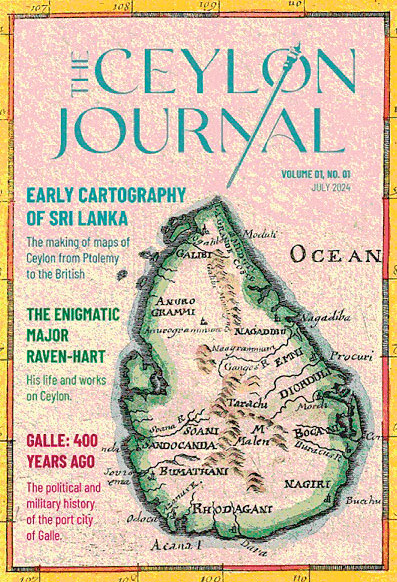 We often blame politicians for things that go wrong in our country and God knows they are responsible for most of it. But unfortunately for us, the first six years of independence, from 1948 to 1954, were really unlucky years for Sri Lanka. As if successive failed monsoons and falling rice crops weren’t bad enough, along came the Korean war. In the meantime, the Sri Lankan people had got used to the idea of food rations during the war and they wanted rations to be continued as free handouts. Those demands climaxed in the ‘Hartal’ of 1953, a general strike demanding something for nothing. Politicians were being forced to keep the promises they had made when before independence, that they would deliver greater prosperity than under the British.
We often blame politicians for things that go wrong in our country and God knows they are responsible for most of it. But unfortunately for us, the first six years of independence, from 1948 to 1954, were really unlucky years for Sri Lanka. As if successive failed monsoons and falling rice crops weren’t bad enough, along came the Korean war. In the meantime, the Sri Lankan people had got used to the idea of food rations during the war and they wanted rations to be continued as free handouts. Those demands climaxed in the ‘Hartal’ of 1953, a general strike demanding something for nothing. Politicians were being forced to keep the promises they had made when before independence, that they would deliver greater prosperity than under the British.
So, by 1949, D. S. Senanayake was forced to devalue the rupee, leading to rapid price inflation. Thankfully we didn’t have significant foreign debt then, or we might have had to declare insolvency much earlier than we finally did, in 2022. And then, because of failing paddy harvests, we were forced to buy rice
from China, which was in turn buying our rubber. But as luck would have it, China entered the Korean war, causing the UN, at the behest of the US, to embargo rubber exports to China.
This placed the D. S. Senanayake and John Kotelawala governments in an impossible predicament. There was a rice shortage; people were demanding free rice, and without rubber exports, there was no foreign exchange with which to buy rice. Kotelawala flew to Washington, D.C., to meet with President Eisenhower and plead for either an exemption from the embargo or else, for the US to buy our rubber. Despite Sri Lanka having provided rubber to the Allies at concessionary prices during the war and having supported the Allies, Eisenhower refused. British and American memories were short indeed. In India, Mahatma Gandhi and the Congress Party had chosen the moment, in August 1942 when Japan invaded Southeast Asia and were poised to invade Bengal, to demand that the British quit India, threatening in the alternative that they would throw their lot in with the Japanese. The Sri Lankan government, by contrast, had stood solidly by the Allies. But now, those same allies stabbed the fledgling nation in the chest. Gratitude, it seemed, was a concept alien to the West.
In these circumstances, Sri Lanka had no choice but to break the UN embargo and enter into a rice-for-rubber barter agreement with China. This resulted not only in the US suspending aid and the supply of agricultural chemicals to Sri Lanka, but also invoking the Battle Act and placing restrictions on US and UK ships calling at the island’s ports.
Understandably, by 1948, Sri Lankans entertained a strong disdain for colonialism. With the Cold War now under way, the USSR and China did all they could to split countries like Sri Lana away not just from their erstwhile colonial masters but also the capitalist system. If any doubt persisted in the minds of Sri Lankan politicians, Western sanctions put an end to that. The country fell into the warm embrace of the communist powers. China and the USSR were quick to fill the void left by the West, and especially in the 1950s, there was good reason to believe that the communist system was working. The Soviet economy was seeing unprecedented growth, and that decade saw them producing hydrogen bombs and putting the first satellite, dog and man in space.
As a consequence of the West’s perfidy in the early 1950s, ‘Capitalism’ continues to have pejorative connotations in Sri Lanka to this day. And it resulted in us becoming more insular, more inward looking, and anxious to assert our nationalism even when it cost us dearly.
Soon, we abolished the use of English, and we nationalized Western oil companies and the plantations. None of these things did us the slightest bit of good. We even changed the name of the country in English from Ceylon to Sri Lanka. Most countries in the world have an international name in addition to the name they call themselves. Sri Lanka had been ‘Lanka’ in Sinhala throughout the colonial period, even as its name had been Ceylon in English. The Japanese don’t call themselves Japan in their own language, neither do the Germans call themselves Germany. These are international names for Nihon and Deutschland, just like Baharat or Hindustan is what Indians call India. But we insisted that little Sri Lanka will assert itself and insist what the world would call us, the classic symptom of a massive inferiority complex. While countries like Singapore built on the brand value of their colonial names, we erased ours from the books. Now, no one knows where Ceylon tea or Ceylon cinnamon comes from.
Singapore is itself a British name: it should be Sinha Pura, the Lion City, a Sanskrit name. But Singapore values its bottom line more than its commitment to terminological exactitude. Even the name of its first British governor, Sir Stamford Raffles, has become a valued national brand. But here in Sri Lanka, rather than build on our colonial heritage, not the least liberal values the British engendered in us, together with democracy and a moderately regulated economy, we have chosen to deny it and seek to expunge it from our memory. We rejected the good values of the West along with the bad: like courtesy, queuing, and the idea that corruption is wrong.
We have stopped fighting for the dignity of our land, and I hope that as you read the articles in The Ceylon Journal that are published in the future, we will be reminded time and time again of the beautiful heritage of our country and how we can once again find it in ourselves to be proud of this wonderful land.
-
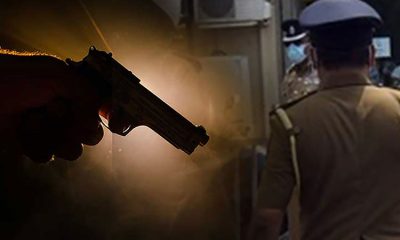
 News4 days ago
News4 days agoSuspect injured in police shooting hospitalised
-

 Features5 days ago
Features5 days agoRobbers and Wreckers
-

 Business4 days ago
Business4 days agoSanjiv Hulugalle appointed CEO and General Manager of Cinnamon Life at City of Dreams Sri Lanka
-

 Business5 days ago
Business5 days agoBhathiya Bulumulla – The Man I Knew
-
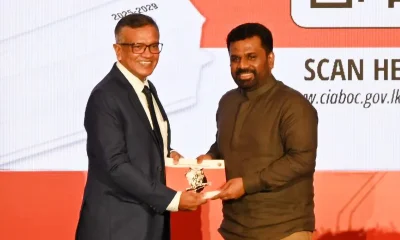
 Business6 days ago
Business6 days agoNational Anti-Corruption Action Plan launched with focus on economic recovery
-
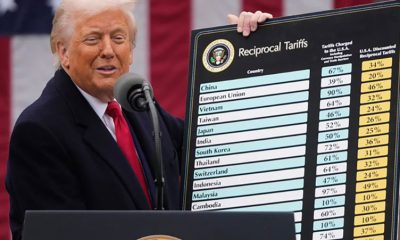
 Features3 days ago
Features3 days agoLiberation Day tariffs chaos could cause permanent damage to US economy, amid global tensions
-
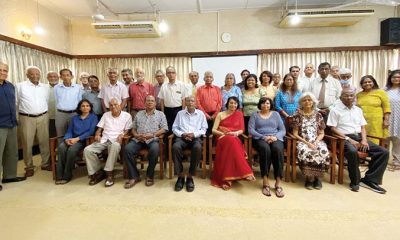
 Features3 days ago
Features3 days agoMinds and Memories picturing 65 years of Sri Lankan Politics and Society
-

 Opinion6 days ago
Opinion6 days agoSome aspects of China’s development model












